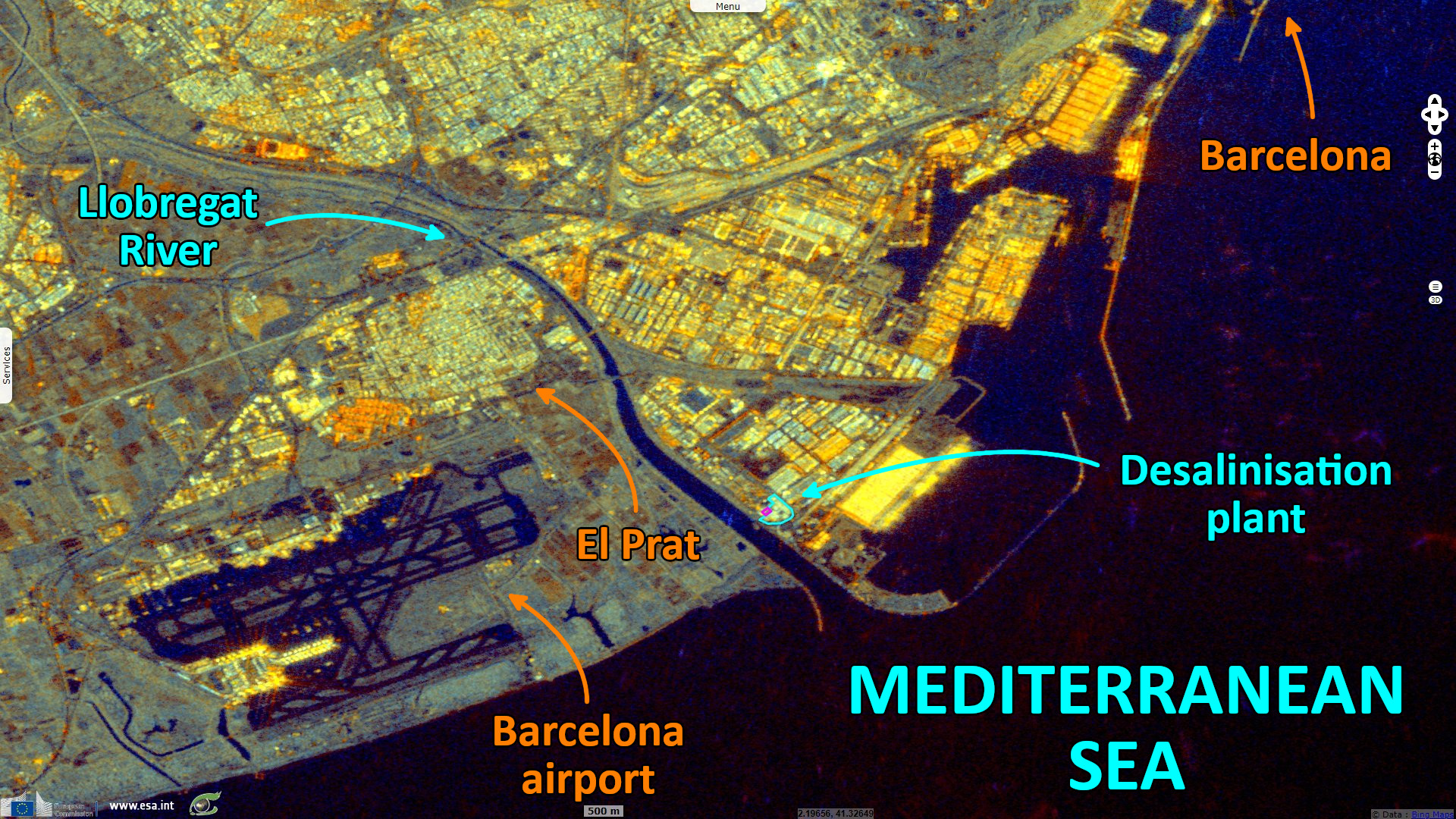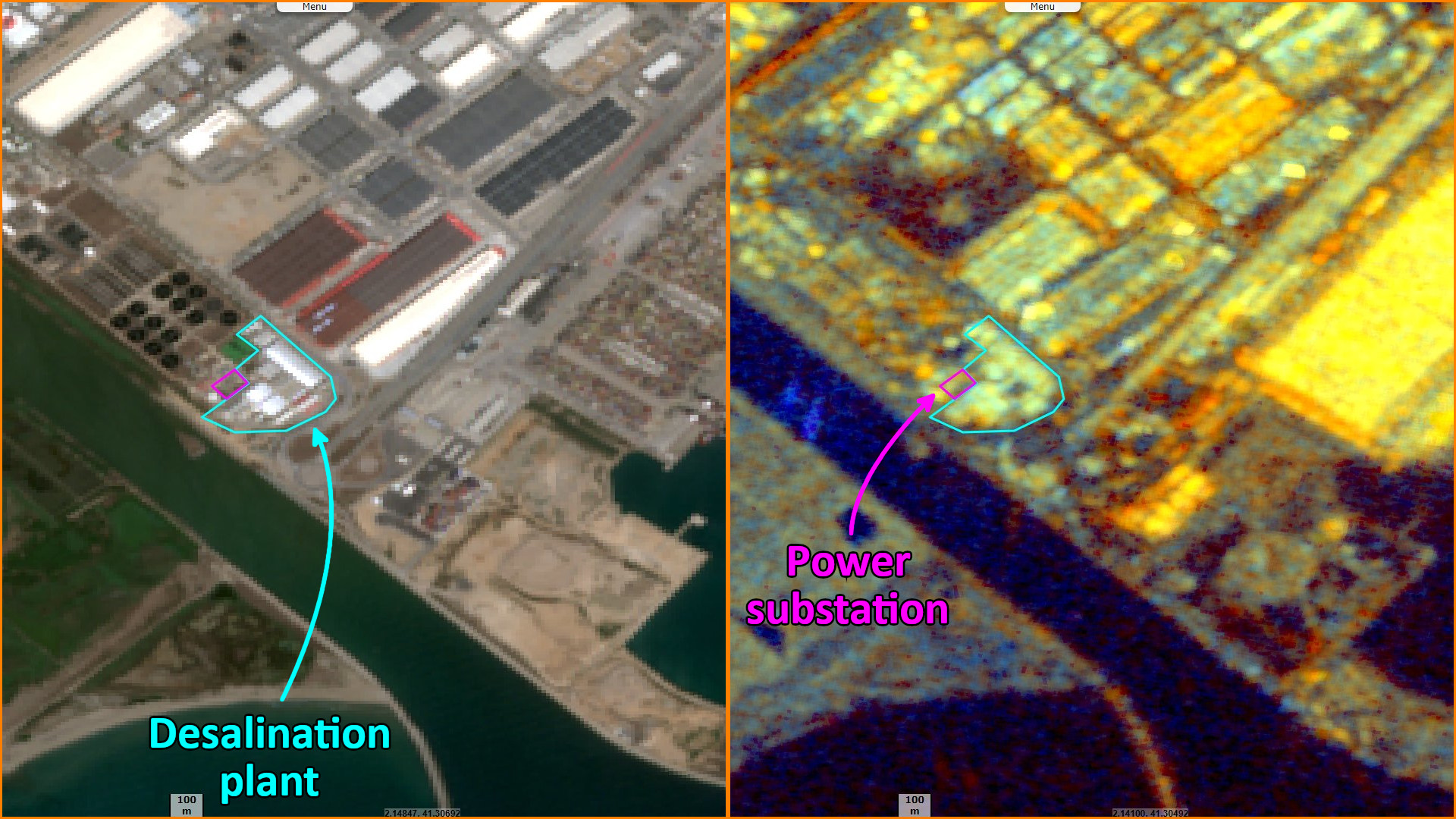As storage ponds deplete, Spain turns toward mass desalinisation plants
Sentinel-2 MSI acquired on 10 August 2022 at 10:36:29 UTC
Sentinel-1 CSAR IW acquired on 19 August 2022 at 18:02:28 UTC
...
Sentinel-1 CSAR IW acquired on 20 September 2022 at 05:53:31 UTC
Sentinel-2 MSI acquired on 04 February 2023 at 10:52:41 UTC
Sentinel-1 CSAR IW acquired on 19 August 2022 at 18:02:28 UTC
...
Sentinel-1 CSAR IW acquired on 20 September 2022 at 05:53:31 UTC
Sentinel-2 MSI acquired on 04 February 2023 at 10:52:41 UTC
Keyword(s): Climate change, coastal, natural resources, drought, food security, irrigation, agriculture, Spain
For lack of rain, with the recycling measures being insufficient to cope with the lack of water alone, Spain is increasingly relying on sea water, the country has more than 700 desalination plants.






